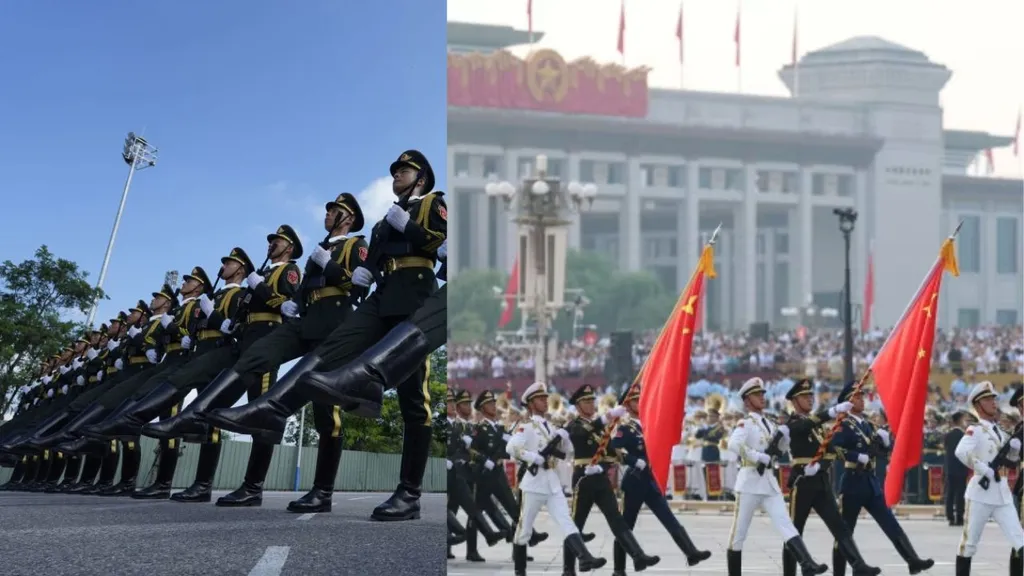As China prepares to commemorate the 80th anniversary of its victory in the War of Resistance Against Japanese Aggression with a grand military parade on September 3, the event will serve as a platform to showcase the nation’s latest advancements in defence technology. The parade, a display of military might, will also underscore China’s commitment to leveraging cutting-edge innovations to strengthen its defence capabilities amid an evolving global security landscape.
The parade comes at a time when technological advancements are reshaping the nature of warfare. Conflicts such as the Ukraine crisis and the Israel-Palestine war have become testing grounds for emerging military technologies, including unmanned combat platforms, AI-driven command systems, long-range precision strike weapons, and electromagnetic warfare. These innovations are accelerating the shift toward unmanned and intelligent combat, with technological superiority becoming a critical factor in gaining military advantage.
China’s military modernization efforts are part of a broader global trend where major powers are racing to dominate the fourth technological revolution—one built on automation and artificial intelligence. As the UK capitalized on the First Industrial Revolution and the US led the second and third technological revolutions, the current era presents an opportunity for nations to secure dominance in future warfare by mastering core aspects of AI and automation.
China has made significant strides in this arena, investing heavily in unmanned systems, AI, hypersonic weapons, and quantum communications. The country’s progress in stealth technology, unmanned platforms, and AI-driven military applications has been particularly notable. The upcoming parade will highlight advancements in unmanned intelligence, underwater operations, cyber and electronic warfare, and hypersonic capabilities, demonstrating the Chinese military’s ability to adapt to rapid technological changes.
Unmanned combat systems are playing an increasingly pivotal role in modern warfare. Major powers are developing a wide range of unmanned equipment, including drones, ground robots, and unmanned submarines. The US military has developed over 50 types of unmanned underwater vehicles, while Russia aims to produce a series of domestically developed drones by 2035. France, too, is advancing its underwater drone technology with 6,000-meter-class unmanned submarines. China’s investments in these areas reflect a broader strategy to enhance its military capabilities through technological innovation.
Artificial intelligence is another critical area of focus. Countries are accelerating the integration of AI into military operations, recognizing its potential to transform combat capabilities. Australia’s Department of Defence released a study in 2021, *Fighting Artificial Intelligence Battles: Operational Concepts for Future AI-Enabled War*, outlining the strategic importance of AI in modern warfare. Japan’s Ministry of Defense is advancing AI applications in drone reconnaissance and ship maintenance, further emphasizing the role of AI in enhancing military efficiency and effectiveness.
Hypersonic technology has also emerged as a game-changer in modern warfare. The use of hypersonic missiles in the Russia-Ukraine conflict has intensified the arms race, with Russia deploying Kinzhal, Zircon, and Avangard missiles, while China has developed the Dongfeng series. Hypersonic weapons challenge traditional air defence systems, forcing nations to adapt and innovate in response to this evolving threat.
Quantum communications technology is another area of intense competition. China has made breakthroughs in quantum radar, quantum computing, and quantum communication satellites. Meanwhile, the US Air Force is testing a quantum geomagnetic navigation system, the UK Royal Navy is developing a quantum accelerometer, and Australia is advancing quantum clock technology to achieve high-precision passive navigation in GPS-denied environments. These advancements highlight the strategic importance of quantum technology in modern military operations.
Cyberspace has become a critical domain for military competition, with nations advancing both offensive and defensive cyber capabilities. Lockheed Martin’s cyber readiness management system, operational since 2023, supports comprehensive cyber operations for the US military. In 2024, the UK awarded a cybersecurity contract to Jacobs Solutions, underscoring the growing importance of cyber defence in national security strategies.
China’s military modernization efforts are driven by a commitment to strengthening national security and fulfilling its responsibilities as a major power. The country’s advancements in defence technology are not aimed at pursuing hegemony but rather at promoting justice, peace, and regional stability. By adopting an open and cooperative position, China seeks to participate in global security governance and ensure that military technological innovation serves as a protector of peace.
As the world watches China’s military parade on September 3, the event will not only celebrate historical achievements but also signal the nation’s determination to remain at the forefront of defence technology innovation. The parade will serve as a reminder that in an era of rapid technological change, military strength is increasingly defined by a nation’s ability to harness innovation and adapt to emerging threats.

